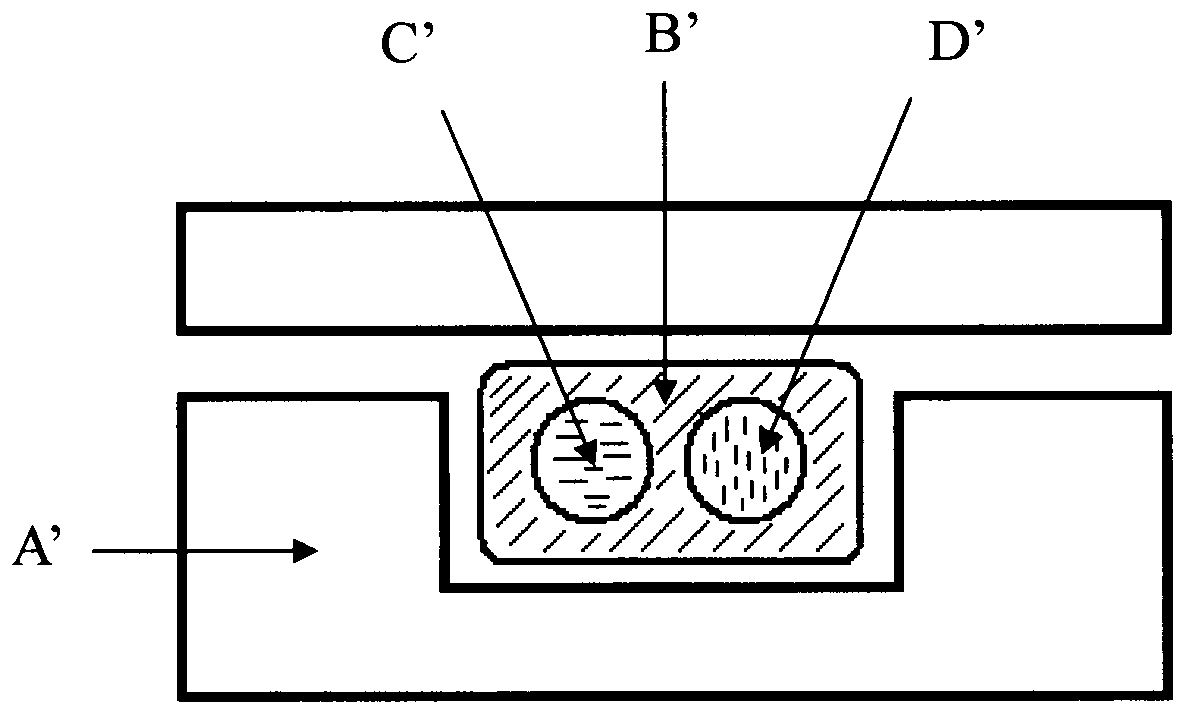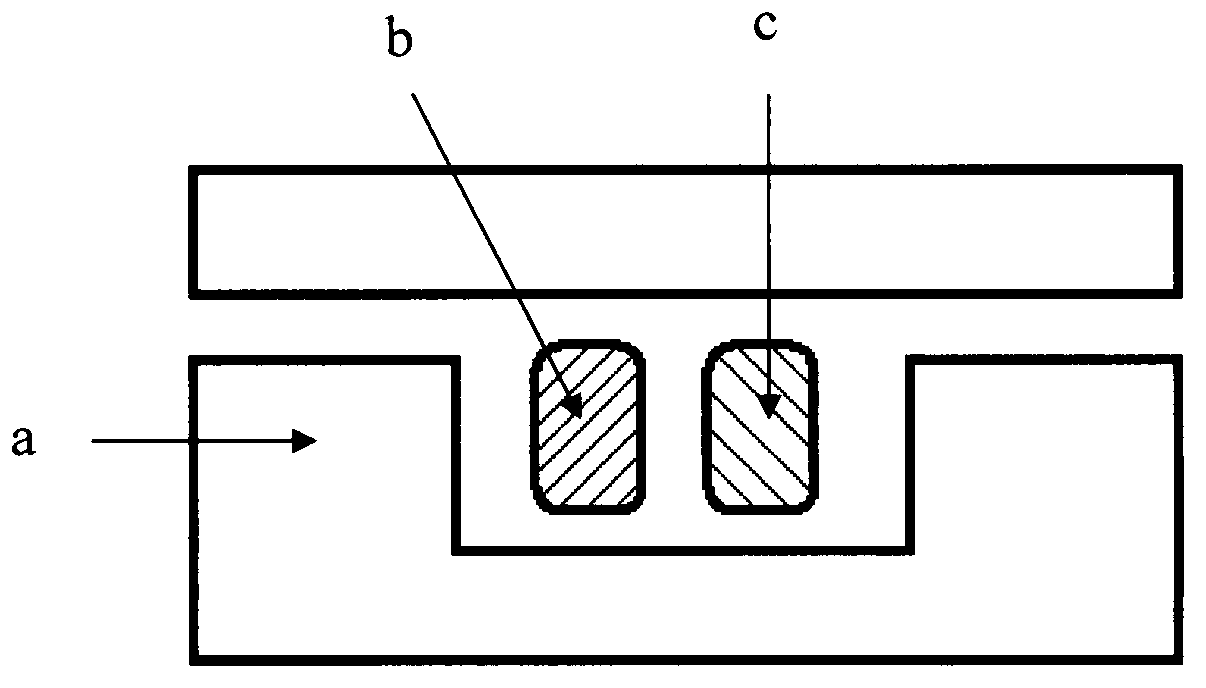Self-luminescence type micro-fluidic chip
A microfluidic chip and self-illuminating technology, which is applied in the direction of laboratory appliances, laboratory containers, chemical instruments and methods, etc., can solve problems such as expensive, affect the promotion of microfluidic chips, and cumbersome preparation processes, and achieve operational easy effect
- Summary
- Abstract
- Description
- Claims
- Application Information
AI Technical Summary
Problems solved by technology
Method used
Image
Examples
Embodiment 1
[0022] Example 1 A self-illuminating microfluidic chip with double liquid sacs
[0023] figure 1 A schematic diagram of the structure of the liquid storage part of a self-illuminating microfluidic chip provided by the present invention. A specific position in the microfluidic chip A has a larger liquid sac B filled with hydrogen peroxide solution; another smaller The liquid sac C is sealed in the liquid sac B, and the liquid sac C is filled with the mixed solution of fluorescent pigment and bisoxalate diester. When in use, depending on the external force, the liquid sac C is damaged, so that the liquid reagent stored in the liquid sac is released, and mixed with the reagent in the liquid sac B to undergo a chemical reaction, and the energy released in the chemical reaction is transferred to the fluorescent pigment molecules. Fluorescent pigments release energy in the form of visible light, thereby converting chemical energy into light energy D, and realizing the self-luminesc...
Embodiment 2
[0024] Example 2 A self-illuminating microfluidic chip with three liquid capsules
[0025] figure 2 It is a schematic structural diagram of the liquid storage part of a self-illuminating microfluidic chip provided by the present invention. A specific position in the microfluidic chip A' has a larger liquid sac B' filled with hydrogen peroxide solution; another The smaller sacs C' and D' are sealed in the sac B', C' is filled with fluorescent pigments, and D' is filled with bisoxalate diester solution. When in use, depending on the external force, the liquid sacs C' and D' are broken, so that the liquid reagent stored in the liquid sac is released and mixed with the reagent in the liquid sac B' to undergo a chemical reaction, and the energy released in the chemical reaction is transferred Give the fluorescent pigment molecules, and the fluorescent pigment releases energy in the form of visible light, thereby converting chemical energy into light energy and realizing the self-...
Embodiment 3
[0026] Example 3 A spontaneous microfluidic chip with side-by-side double liquid sacs
[0027] image 3 A schematic diagram of the structure of the liquid storage part of a self-illuminating microfluidic chip provided by the present invention, a specific position in the microfluidic chip a has a liquid capsule b filled with hydrogen peroxide solution, and another filled with fluorescent pigments and Liquid sac c of mixed solution of bis-oxalic acid diester. When in use, depending on the external force, the liquid sacs b and c are damaged at the same time, so that the two liquid reagents stored in the liquid sacs are released and mixed to undergo a chemical reaction, and the energy released in the chemical reaction is transferred to the fluorescent pigment molecules, and the fluorescent pigment with Energy is released in the form of visible light, thereby converting chemical energy into light energy and realizing the self-luminescence of the chip. Example 4 A spontaneous micr...
PUM
 Login to View More
Login to View More Abstract
Description
Claims
Application Information
 Login to View More
Login to View More - R&D
- Intellectual Property
- Life Sciences
- Materials
- Tech Scout
- Unparalleled Data Quality
- Higher Quality Content
- 60% Fewer Hallucinations
Browse by: Latest US Patents, China's latest patents, Technical Efficacy Thesaurus, Application Domain, Technology Topic, Popular Technical Reports.
© 2025 PatSnap. All rights reserved.Legal|Privacy policy|Modern Slavery Act Transparency Statement|Sitemap|About US| Contact US: help@patsnap.com



